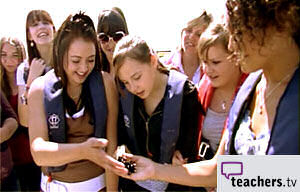Ask the team
Information for teachers
In its 2007 report on 'Investigating the Oceans', the House of Commons Science and Technology Select Committee noted that 'marine science has clear attractions to young people and could be drawn into many topics to increase interest in science, such as biodiversity in the deep ocean', and suggested that 'a focus on extreme environments (space and oceans) would entice young people into science'.
We completely agree, and so the links below contain some suggestions for where and how the science of our expedition can fit into the UK school curriculum:
Primary curriculum: 'Scientific knowledge and technological understanding'
GCSE Biology, Chemistry, Physics
A-level Biology, Chemistry, Physics
And here's our pick of educational links about undersea volcanoes and deep-sea life:
Explore the Deep Sea - Volcanoes and Vents
Explore the Deep Sea - Life in the Deep
(There are lots of webpages out there about deep-sea vents. Unfortunately many are riddled with factual errors. But those Venture Deep Ocean pages are excellent. They were created by the Education and Outreach team of Ridge 2000, the US national programme of scientific research at mid-ocean ridges.)
If you are in the southern UK and would like some hands-on experience of marine science, why not try a Discover Oceanography trip? The University of Southampton offers school groups the opportunity for half-day field trips aboard its research vessel Callista. We can't take you to the Cayman Trough, but the trips aboard Callista give a real taste of science at sea.
Watch a teachers.tv feature |
Download a flyer about Discover Oceanography.
Science
Find out more about the Cayman Trough, undersea volcanoes, deep-sea vents,
and the inhabitants of the abyss.
What are we investigating?
Technology
Take a tour of our research ship and our undersea vehicles, sensors and systems for exploring the ocean floor.
What are we using?
Team
Meet the people aboard the ship: biologists and geologists, professors and students, engineers and mariners.
Who are we?



